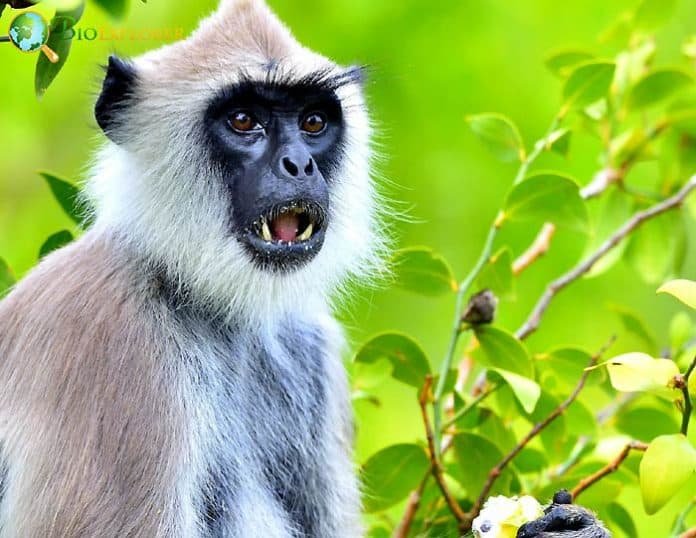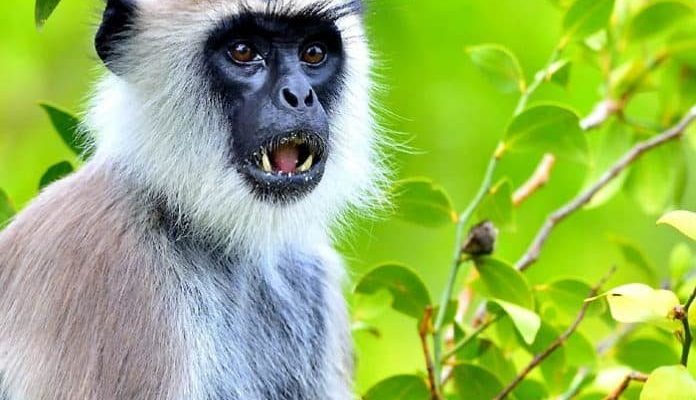
Let’s dive into their world. Understanding what langurs eat and how they hunt can offer insights into their behavior and survival tactics. They rely mainly on a vegetarian diet, but they have some clever strategies for finding food. It’s like having a plan B and C ready in case Plan A doesn’t work out. If you’re curious about these primates, stay with me while we explore their dietary habits and hunting techniques.
A Closer Look at Langurs
Langurs belong to a group of monkeys known as the colobines, which are recognized for their unique adaptations and social structures. They thrive in varying habitats, from dense forests to open grasslands across India, Nepal, and Sri Lanka. These primates are typically medium to large in size and are known for their long tails, which help them balance as they move through the trees.
Their social structure is fascinating. Langurs often live in troops consisting of several females and one dominant male, creating an intriguing dynamic. This social order can influence how they obtain food. The larger the troop, the more eyes are on the environment, helping them spot potential threats—or lunch! This collective behavior not only provides safety but also enhances their foraging success.
Here’s the thing: langurs are also incredibly adaptable. While they primarily forage for food in trees, they often venture to the ground to seek out different options. Their ability to explore various terrains makes them more resilient to changes in their environment, like deforestation or habitat fragmentation.
What Do Langurs Eat?
Langurs are primarily herbivorous, meaning their diet mainly consists of plant material. Let’s break down some of their preferred food sources:
- Leaves: They love munching on tender leaves, especially young and juicy ones from trees and shrubs.
- Fruits: In the right season, they’ll indulge in a variety of fruits, picking ripe ones with great care.
- Flowers: Yes, flowers! They often snack on petals and nectar, adding a sweet touch to their diet.
- Seeds: Although seeds are harder to digest, langurs sometimes consume them when other food isn’t available.
You might be wondering how they manage to eat such fibrous materials. Langurs have specialized stomachs that allow them to digest tough plant fibers efficiently. They rely on a fermentation process similar to what cows use, helping break down the cellulose in leaves. This adaptation means they can access nutrients that many other animals can’t.
While langurs have a mostly plant-based diet, they have been observed consuming insects—though this is a rare treat rather than a staple. Picture a langur climbing down a tree and snatching up an ant or two, just adding a splash of protein to their leafy feast.
Hunting Strategies of the Langur
Now, let’s talk about hunting strategies. While the term “hunting” might bring to mind big predators like lions or wolves, langurs have their own approach to obtaining food, albeit more focused on foraging rather than killing.
Langurs rely heavily on their social structure to make food hunting efficient. For instance, when a troop finds a good source of food, they can communicate using vocalizations to alert others in the group. This teamwork allows them to take full advantage of seasonal food availability.
Here’s a fun fact: langurs have a pecking order. The dominant male often has first dibs on the best food, which can lead to some rivalry among group members. You can imagine them playfully tussling over the tastiest leaves while the others patiently wait their turn. It’s an interesting blend of competition and cooperation!
Moreover, langurs exhibit another impressive strategy: food caching. In times of abundance, they may stash away extra food for later. This behavior shows a level of foresight—like saving your favorite cookies for a rainy day. By caching food, they ensure that even when resources are scarce, they have a backup plan.
The Role of Nutrition in Langur’s Health
Nutrition plays a critical role in the langurs’ overall health. A balanced diet helps them maintain energy levels required for their active lifestyle. The high fiber content helps in digestion, while the variety of leaves, fruits, and flowers ensures they get essential vitamins and minerals.
Langurs are particularly sensitive to changes in their diet. If their preferred food sources diminish due to habitat loss, it can adversely affect their health. A lack of variety can cause deficiencies, making them more vulnerable to diseases.
Another aspect to consider is the impact of human encroachment. As humans develop land for agriculture or urbanization, langurs may face food shortages. This situation highlights the urgency of conserving their habitats and ensuring that these charming primates have the resources they need to thrive.
How Habitat Affects Langur Diet
The specific habitat of langurs heavily influences their diet. They inhabit a variety of locations, from tropical rainforests to deciduous forests and even scrubland. Each environment offers different food sources that shape their dietary choices.
In tropical rainforests, for instance, you’ll find an abundance of fruit-bearing trees. Langurs in these regions tend to have a fruit-heavy diet, especially during peak ripening seasons. On the other hand, those in drier or more open habitats may rely more on leaves and seeds, as fruits can be scarce.
This adaptability means langurs are pretty resourceful when it comes to food availability. Their ability to switch diets based on the season or habitat can be crucial for survival. They’re like nature’s little survivors, figuring out how to feast wherever they are.
In summary, their diet and hunting strategies reflect their environment and social behavior, showcasing the remarkable ways animals adapt to their surroundings.
Conservation and the Future of Langurs
As we wrap up our dive into the langur’s diet and hunting strategies, it’s crucial to touch on conservation efforts. Like many wildlife species, langurs face significant threats from habitat destruction, hunting, and climate change. Protecting their natural habitats is essential for ensuring their survival.
Various organizations are working tirelessly to conserve the forests where these primates live and thrive. By creating protected areas and working with local communities, we can help ensure that langurs have safe spaces to find food and raise their young.
Furthermore, education plays a vital role. Raising awareness about the importance of langurs in the ecosystem can inspire people to take action in their communities. Whether it’s supporting local conservation initiatives or simply sharing what you’ve learned, every little bit helps.
So, the next time you come across a langur in a documentary or read about them in a book, remember the intricate details of their diet and hunting strategies. They’re not just adorable creatures swinging through the trees; they’re essential players in their ecosystem, and their story deserves to be told.
In conclusion, the langur’s diet and hunting strategies highlight the fascinating complexities of life in the wild. By understanding these aspects, we can appreciate their role in nature and work together to protect these incredible primates for future generations.

